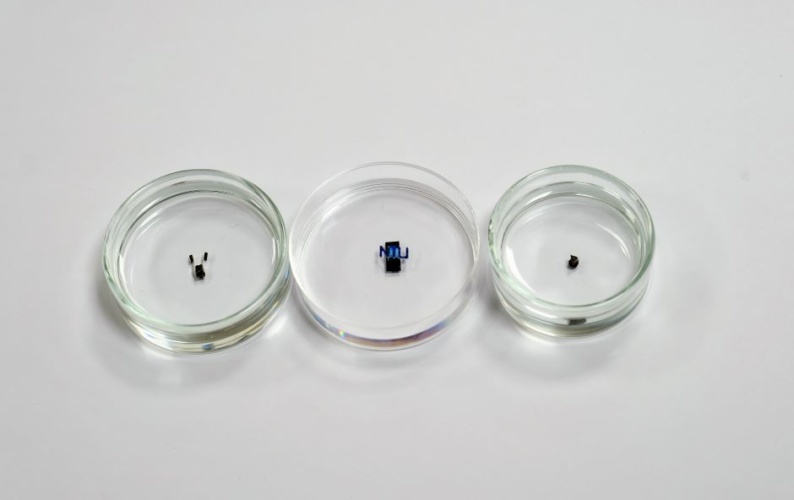This is the claim of a team of scientists at Nanyang Technological University, Singapore (NTU Singapore) whose miniature robots were created by embedding magnetic microparticles into biocompatible polymers. The robots are ‘programmed’ to execute their desired functionalities when magnetic fields are applied.
Bioprinting microrobot holds promise for internal tissue repairs
The robots are claimed to improve on existing small-scale robots by optimising their ability to move in six degrees-of-freedom (DoF). While researchers have previously created six DoF miniature robots, the new NTU miniature robots can rotate 43 times faster in the critical sixth DoF when their orientation is precisely controlled. They can also be made with ‘soft’ materials and can replicate important mechanical qualities — one type can ‘swim’ like a jellyfish, and another has a gripping ability that can precisely pick and place miniature objects.
The NTU team’s findings are published in Advanced Materials. Lead author of the study, Assistant Professor Lum Guo Zhan from the School of Mechanical and Aerospace Engineering said the crucial factor that led to the team’s achievement lie in the discovery of the ‘elusive’ third and final principal vector of these magnetic fields, which is critical for controlling such machines. According to NTU Singapore, previous works had only defined the applied magnetic fields in terms of two principal vectors.
“My team sought to uncover the fundamental working principles of miniature robots that have six-DoF motions through this work,” Asst Prof Lum said in a statement. “By fully understanding the physics of these miniature robots, we are now able to accurately control their motions. Furthermore, our proposed fabrication method can magnetise these robots to produce 51 to 297 folds larger six-DoF torques than other existing devices. Our findings are therefore pivotal, and they represent a significant advancement for small-scale robotic technologies.”

The movements of the robots can be controlled remotely by an operator, using a programme running on a control computer that precisely varies the strength and direction of magnetic fields generated by an electromagnetic coil.
The miniature robots may be used to reach confined and enclosed spaces currently inaccessible to existing robots, the NTU team said, making them particularly useful in the field of medicine. The miniature robots may also inspire novel surgical procedures for organs such as the brain but the NTU team caution that more work and testing needs to be accomplished before the miniature robots can eventually be deployed in targeted medical applications.
Research co-authors, PhD students Xu Changyu and Yang Zilin from the School of Mechanical and Aerospace Engineering believe the robots could also be of value in biomedical applications such as assembling lab-on-chip devices that can be used for clinical diagnostics by integrating several laboratory processes on a single chip.
The NTU team is now looking to make their robots on the scale of a few hundred micrometres, and to ultimately make the robots fully autonomous.

Project to investigate hybrid approach to titanium manufacturing
What is this a hybrid of? Superplastic forming tends to be performed slowly as otherwise the behaviour is the hot creep that typifies hot...